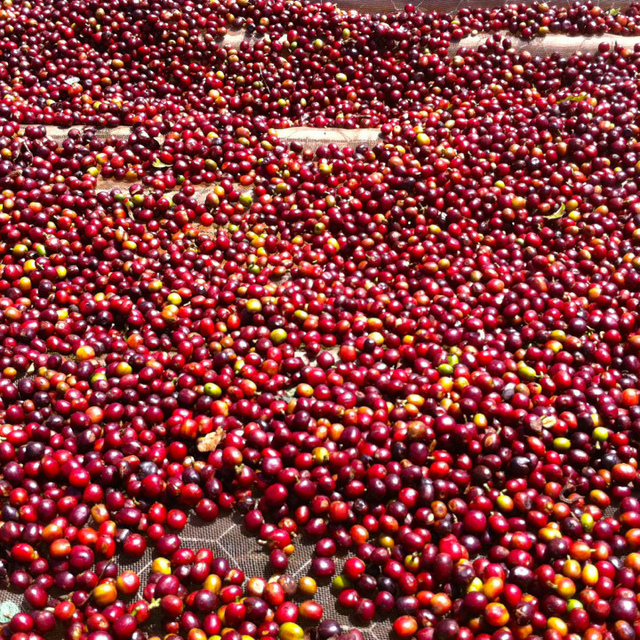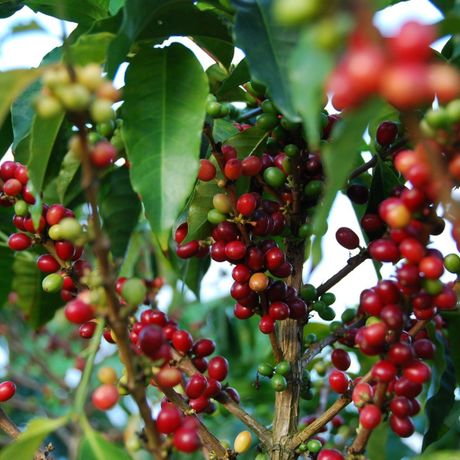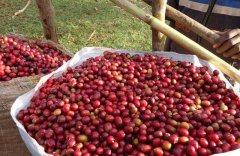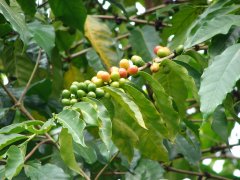How does oromia wash Sidamo G1 coffee taste? Guji producing area washed Lion King coffee beans.

Professional coffee knowledge exchange more coffee bean information please follow the coffee workshop (Wechat official account cafe_style)
Description of Coffee Flavor and aroma in Humbela Town, G1 Valley, Sidamo, Ethiopia
Ethiopia washed Sidamo G1 Lion King Valley producing area (Ethiopia Sidamo Lion King Washed G1)
Introduction:
Friends who like to wash Ethiopia have one more bean to choose from! Lion King can be said to be the most amazing quality micro-batch of coffee beans in Guji Zone this year. Strong lemon and sweet citrus, orange and flower flavors can be used to describe this bean.
The administrative region of Ethiopia is divided into four grades, the order from big to small is Region, Zone, woreda and kebele. Most of the place names of raw coffee bean producing areas are named according to this rule. The Guji producing area launched in this batch is located in the southeast of Yejia Sheffield, a well-known producing area. In terms of administrative division, it belongs to the coffee raw beans of Oromia Region → Guji Zone. Just as Yejia Xuefei became well-known after its fame, it became an independent secondary production area of Sidamo (Guji Zone).
This batch is produced by small coffee farmers in the Shilcho Coop cooperative near the town of Dara Woreda in Sidama province. This cooperative was founded in 1976 and is currently a member of SCFCU (Sidama Coffee FarmerCooperative Union), the cooperative federation of Sidama province. SCFCU is a large Ethiopian coffee cooperative federation, which currently has about 46 member cooperatives and is the second largest coffee cooperative union in Ethiopia. At present, the Sirsa Cooperative (Shilcho Coop) has about 1200 families of small coffee farmers and has its own washing farm.
The Sirsa Cooperative (Shilcho Coop), founded in 1976, is one of the sponsors of the Dutch Red Cherry Project. The Red Cherry Project (Operation Cherry Red) is led by the Dutch company Trabocca, and half of the funding is funded by the Dutch government. Since 2005, the Dutch company Trabocca has partnered with many small coffee cooperatives in Ethiopia to teach and help encourage small coffee farmers to improve coffee quality management by improving post-treatment techniques such as washing, sun or fermentation, starting with red fruit harvest. During the harvest season, Trabocca invites selected coffee farmers' organizations and producers to participate in the project.
Harvest micro-batches of coffee (about 1500 to 3000kg) and carefully select 100% ripe red coffee cherries by hand in batches (so it is called the Red Cherry Project). Trabocca provides financial, equipment and technical resources to assist farmers and promises to purchase quality specifications that meet the required standards in accordance with the standard process (SOP) at an excellent price. The spirit of the project is a bit like the nature of the contract.
The production area of Guji Zone has always been a production area worthy of considerable attention, and the development in recent years has also confirmed that the rise of Guji production area is indeed one of the important trends in the development of Ethiopia in recent years. In addition to the beans from the larger producing areas, such as Humbera and Shakespeare, there are also excellent beans from processing plants or even single estates, which are unmatched by the traditional Yega Sheffield producing areas. What's more, in terms of innovative treatment methods, there will also be honey treatment batches. In addition to the recent focus in Gesha Village, the Guji producing area has also become an important hot spot. To understand the trends in Ethiopia, Guji can be said to be a key point that can not be ignored.

Flavor description: strong lemon aroma and sweet citrus, jasmine, orange,
Mild, clean and balanced full-bodied fruit sweet, mild, clean and balanced, typical
Sidamo's tonal water washing is sweet and sweet, with a long, lively and varied fruit.
Country Ethiopia (Ethiopia)
Producing area Oromia Region
Guji (Guji Zone)
Producer: Sylvia Cooperative (Shilcho Coop)
1900 to 2300 meters above sea level
Variety Ethiopian Guyou original species (Heirloom)
Annual rainfall of about 1500 to 2, 000 mm (mm)
Soil: reddish brown
Treatment method African scaffolding single-layer washing and drying treatment
Important Notice :
前街咖啡 FrontStreet Coffee has moved to new addredd:
FrontStreet Coffee Address: 315,Donghua East Road,GuangZhou
Tel:020 38364473
- Prev

Ethiopia wash Sidamo G1 coffee hand brewing parameters suggest Dingtu Village Coffee in Guji producing area
Professional coffee knowledge exchange more coffee bean information please follow the coffee workshop (Wechat official account cafe_style) Ethiopia washed West Dama G1 Guji District Humbera Town Coffee Flavor Taste description Product name: Ethiopia washed West Dama G1 Tingtu Village LOT2 Guji production area (Ethiopia Sidamo Guji Dimtu Lot2 washed G1) introduction: Humber
- Next

Description of the flavor characteristics of the microclimate in the polar plateau of Yejasuefei Cocoa Village the best coffee in Yejasuefi
For the exchange of professional baristas, please pay attention to the coffee workshop (Wechat official account cafe_style). The King of Ethiopia and Africa Sun Ye Jia Xuefei Cocoa Honey processing Plant G1 is selected from Kokei Cocoa Village, which is located at the highest point of Haiba in Yegashefi District, Ethiopia. Haiba ranges from 1900 to 2100m. There are nearly 4000 small farmers in Cocoa Village.
Related
- Detailed explanation of Jadeite planting Land in Panamanian Jadeite Manor introduction to the grading system of Jadeite competitive bidding, Red bid, Green bid and Rose Summer
- Story of Coffee planting in Brenka region of Costa Rica Stonehenge Manor anaerobic heavy honey treatment of flavor mouth
- What's on the barrel of Blue Mountain Coffee beans?
- Can American coffee also pull flowers? How to use hot American style to pull out a good-looking pattern?
- Can you make a cold extract with coffee beans? What is the right proportion for cold-extracted coffee formula?
- Indonesian PWN Gold Mandrine Coffee Origin Features Flavor How to Chong? Mandolin coffee is American.
- A brief introduction to the flavor characteristics of Brazilian yellow bourbon coffee beans
- What is the effect of different water quality on the flavor of cold-extracted coffee? What kind of water is best for brewing coffee?
- Why do you think of Rose Summer whenever you mention Panamanian coffee?
- Introduction to the characteristics of authentic blue mountain coffee bean producing areas? What is the CIB Coffee Authority in Jamaica?

